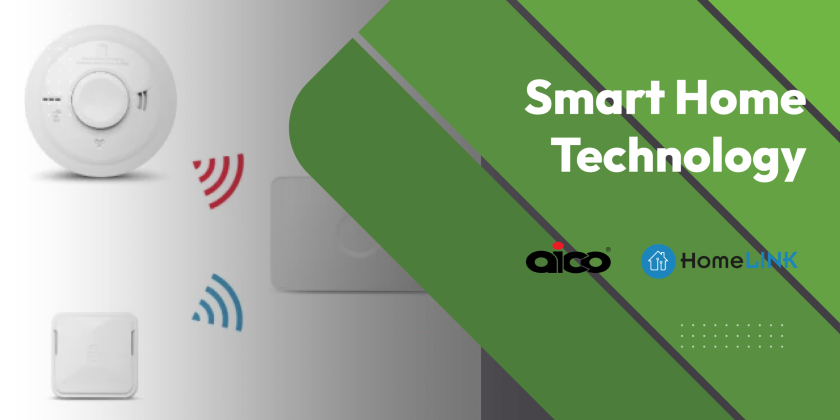Harnessing the power of the sun to generate electricity has become an increasingly popular and practical solution for many households and businesses. Solar panels, with their ability to convert sunlight into usable energy, are at the heart of this renewable technology. By understanding the basic principles of how solar panels work, we can better appreciate their role in reducing our dependence on fossil fuels and lowering our carbon footprint. In this guide, we will break down the process of how solar panels generate electricity, making it easy for anyone, regardless of technical background, to grasp the essentials. Let’s dive into the fascinating world of solar energy and explore how these innovative devices are transforming the way we power our lives.
Understanding Solar Energy
What is Solar Energy?
Solar energy is the radiant light and heat emitted by the sun, which can be harnessed for various forms of power. Essential for life on Earth, it is a clean, renewable energy source that offers a sustainable alternative to fossil fuels. Solar energy can be captured through different technologies, with solar panels being the most common for generating electricity. These panels utilise photovoltaic cells to convert sunlight directly into electrical energy. The potential of solar energy is vast, as the sun provides an inexhaustible source of power, capable of fulfilling global energy needs many times over. As technology advances, harnessing solar energy becomes more efficient and cost-effective, making it accessible to a wider range of users. Embracing solar energy contributes to reducing greenhouse gas emissions and combating climate change, promoting a cleaner and more sustainable future for generations to come.
History of Solar Technology
The history of solar technology dates back to ancient times, when civilisations used sunlight to light fires with magnifying glasses. However, the modern journey began in the 19th century with the discovery of the photovoltaic effect by French physicist Edmond Becquerel. This discovery laid the foundation for converting sunlight directly into electricity. In 1954, Bell Laboratories produced the first practical photovoltaic cell, marking a significant leap forward. Initially, solar cells were costly and used primarily in space applications. Over the decades, research and technological advancements have dramatically reduced costs and improved efficiency. The 1970s energy crisis spurred further interest and investment in solar technology, leading to broader adoption. Today, solar panels are a common sight on rooftops and solar farms worldwide, reflecting their evolution from niche technology to a mainstream solution. This historical trajectory underscores the potential and growing importance of solar energy in meeting the world’s energy demands sustainably.
How Solar Panels Work
Photovoltaic Cells Explained
Photovoltaic cells, or solar cells, are the building blocks of solar panels. These cells are made from semiconductor materials, typically silicon, that absorb sunlight and convert it into electricity. When sunlight strikes a photovoltaic cell, it energises the electrons within the semiconductor. This energy causes the electrons to move, creating an electric current. This process is known as the photovoltaic effect. Each cell generates a small amount of power, so they are connected together in series and parallel configurations within a solar panel to produce a usable voltage and current. The efficiency of a photovoltaic cell depends on its ability to absorb sunlight and convert it into electricity, with modern cells achieving efficiencies of around 20%. By combining multiple cells into panels and installing them in areas with abundant sunlight, we can generate significant amounts of clean, renewable energy to power homes, businesses, and even large-scale operations.
Energy Conversion Process
The energy conversion process in solar panels begins when sunlight hits the photovoltaic cells. These cells contain layers of silicon, treated to create an electric field. When photons from sunlight strike the silicon, they knock electrons loose, allowing them to flow through the material to produce electricity. This flow of electrons is direct current (DC) electricity. Most homes and businesses, however, operate on alternating current (AC) electricity. To convert the DC electricity generated by the solar panels into AC, an inverter is used. The inverter is a crucial component of the solar energy system, ensuring that the power generated can be used by household appliances or fed into the main electricity grid. This seamless conversion process is what enables solar panels to provide a dependable source of renewable energy, integrating with existing infrastructure and reducing reliance on non-renewable energy sources. Thus, solar panels transform sunlight into a practical, sustainable power solution.
Components of a Solar Panel System
Key Parts of a Panel
A solar panel is made up of several key components that work together to convert sunlight into electricity. The main part is the photovoltaic cells, typically made from silicon, which are responsible for capturing sunlight and initiating the energy conversion process. These cells are sandwiched between protective layers: a front glass sheet and a backsheet, which safeguard the cells from environmental damage while allowing sunlight to pass through.
Encapsulant materials, usually made of EVA (ethylene vinyl acetate), are used to bind the cells together and provide structural integrity. The aluminium frame of the panel provides additional support and facilitates easy mounting on rooftops or other structures.
Lastly, the junction box at the rear of the panel houses electrical connections and diodes, which help in safely directing the electrical current produced by the cells. Together, these components form a robust system capable of reliably generating renewable energy for various applications.
Inverters and Their Role
Inverters are a vital component of a solar panel system, as they convert the direct current (DC) electricity generated by the solar panels into alternating current (AC) electricity, which is used by most electrical appliances and the grid. Without inverters, the electricity produced by solar panels would be incompatible with household electrical systems.
There are different types of inverters used in solar systems, including string inverters, microinverters, and power optimisers. String inverters are the most common, connecting multiple panels in a series. Microinverters, on the other hand, are installed on individual panels, allowing for optimised performance even if one panel is shaded or underperforming. Power optimisers work similarly to microinverters, enhancing the efficiency of each panel while being paired with a central inverter.
Inverters also provide system monitoring, enabling users to track their solar power production and ensure everything is functioning correctly. Their role is crucial in maintaining efficient and effective solar energy utilisation.
Benefits and Challenges
Advantages of Solar Power
Solar power offers numerous advantages, making it an attractive energy source for both individuals and businesses. Firstly, it is a renewable resource, drawing energy from the sun, which is abundant and inexhaustible. This helps to reduce reliance on fossil fuels, thereby cutting greenhouse gas emissions and combating climate change.
Additionally, solar power systems often lead to significant cost savings on electricity bills. Once installed, they require minimal maintenance and have low operational costs, providing long-term financial benefits. Solar energy also promotes energy independence, allowing users to generate their own electricity and reduce vulnerability to fluctuating energy prices.
Moreover, solar installations can increase property value, as homes with solar systems are often viewed as more desirable due to their energy efficiency. Lastly, solar power systems can be installed on various scales, from small home systems to large solar farms, providing versatility and accessibility in different settings. These advantages underline the potential of solar energy as a sustainable power solution.
Limitations and Considerations
Despite its many benefits, solar power does have limitations and considerations that must be taken into account. One of the primary limitations is the dependency on sunlight, meaning solar panels generate less electricity on cloudy days and none at night. This intermittency can pose challenges for consistent energy supply, necessitating storage solutions like batteries or backup systems.
Additionally, the initial cost of purchasing and installing solar panels can be significant, although prices have been decreasing and financial incentives may be available to mitigate these costs. Furthermore, solar installations require adequate space and a suitable location with good sunlight exposure, which may not be feasible for all properties.
The environmental impact of manufacturing and disposing of solar panels is another consideration, as it involves energy-intensive processes and the use of certain materials. However, advancements in technology and recycling efforts are addressing these concerns. Balancing these limitations with the advantages can help determine the viability of solar power for specific situations.
Future of Solar Technology
Innovations in Solar Energy
Innovations in solar energy are continually driving the industry forward, making it more efficient, affordable, and versatile. One significant advancement is the development of perovskite solar cells, which promise higher efficiency rates and lower production costs compared to traditional silicon cells. These cells can be manufactured using simpler processes and even printed onto flexible surfaces, broadening their application scope.
Bifacial solar panels, which capture sunlight on both sides, are another innovation enhancing energy yield. These panels can generate more electricity by utilising reflected light, making them particularly effective in environments with high albedo surfaces like snow or white rooftops.
Solar tracking systems, which adjust the orientation of panels to follow the sun’s path, are also improving overall efficiency. Additionally, integrated solar solutions, such as building-integrated photovoltaics (BIPV), blend seamlessly with architectural designs, providing both aesthetic and functional benefits.
These innovations are pushing the boundaries of what solar energy can achieve, paving the way for a more sustainable and energy-efficient future.
Global Impact and Trends
The global impact of solar technology is profound, as it plays a crucial role in the transition to renewable energy sources. As countries aim to meet climate change targets, the adoption of solar power is increasing, contributing significantly to reducing carbon emissions. Solar energy is also helping to address energy poverty in developing regions, providing access to electricity where traditional infrastructure is lacking.
Trends indicate a growing investment in solar infrastructure, with many nations incorporating large-scale solar farms into their energy strategies. The expansion of distributed solar systems, such as rooftop panels, is empowering individuals and businesses to produce their own clean energy, enhancing energy independence.
Furthermore, advancements in solar storage technology are enabling more efficient use of solar power, even during non-sunny periods. Coupled with decreasing costs and increased efficiency, these trends suggest that solar energy will continue to expand its footprint worldwide, fostering sustainable economic growth and environmental stewardship.


